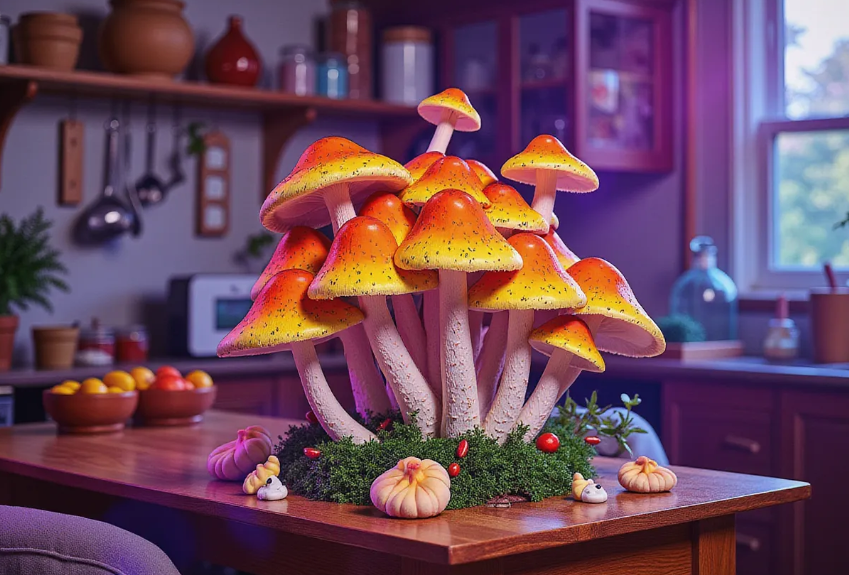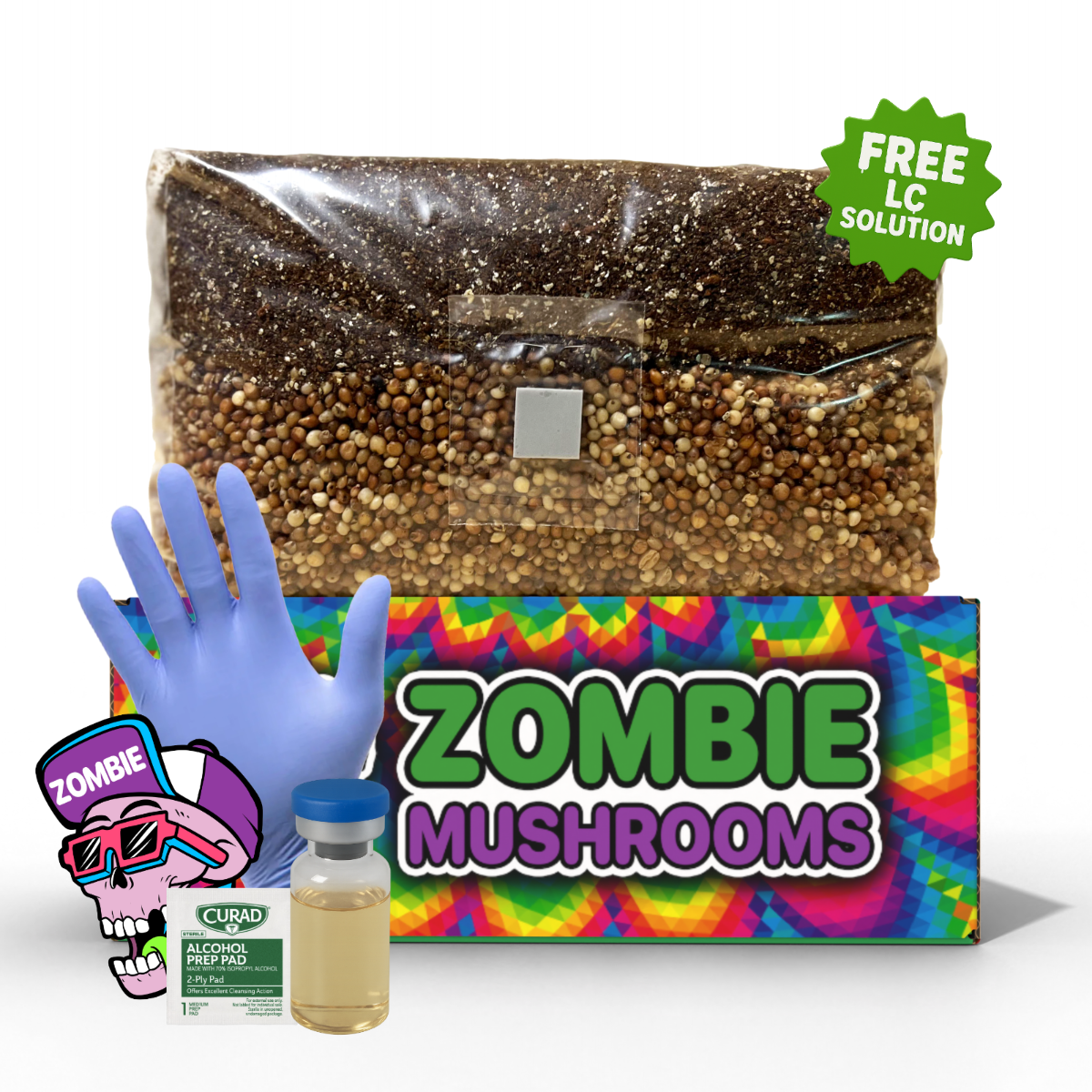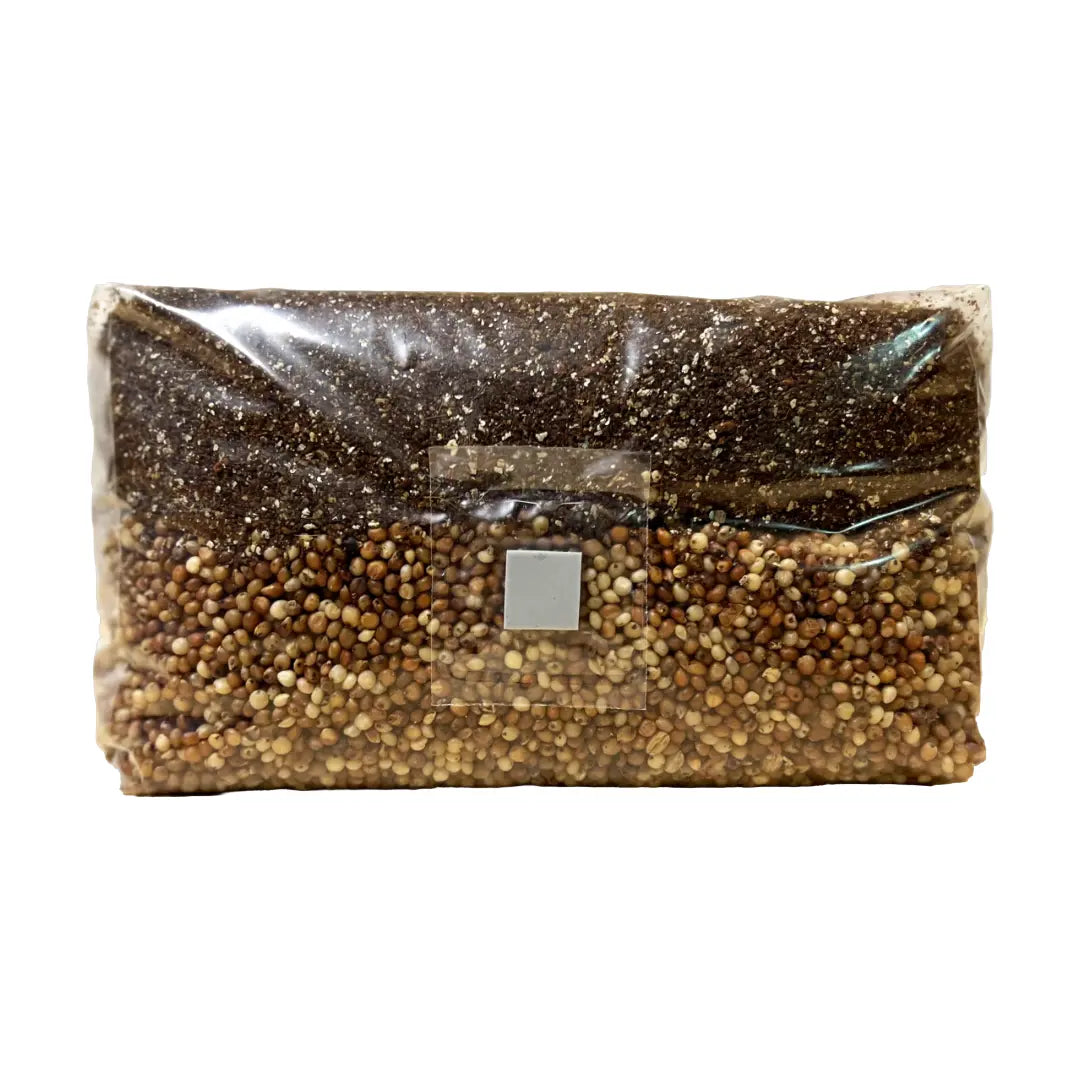⬇️ Prefer to listen instead? ⬇️
- Lion’s mane mushrooms contain hericenones and erinacines, which may help nerve growth and thinking skills.
- Keeping lion’s mane in a paper bag in the fridge can make them last up to 7 days.
- Cooked and frozen lion’s mane mushrooms are still good for up to 6 months.
- Drying mushrooms makes them last the longest—up to 12 months and they still have their health benefits.
- Putting fresh lion’s mane in plastic or wet places makes them go bad fast and lose nutrients.
Keeping your lion’s mane mushrooms fresh is important for taste and for keeping their great health benefits. These shaggy mushrooms that are good for your brain have delicate stuff inside them that breaks down fast if you don’t store them right. If you buy lion’s mane at the store or get them from a grow kit, knowing how to handle and store them the right way is a big deal. Our mushroom grow bags give you control over freshness, making it easy to grow, harvest, and enjoy lion’s mane mushrooms at their peak

What Is Lion’s Mane and Why Is It So Popular?
Lion’s mane mushrooms (Hericium erinaceus) are very popular in the health world because they are both tasty and good for you. They are called lion’s mane because they look like one, with long, white, shaggy parts. When cooking, they are great because they taste like meat or seafood, especially when you cook them in a pan or oven. But the best thing about lion’s mane is that they have a lot of special things inside them.
Researchers have found hericenones and erinacines are two main things in lion’s mane that help nerves grow and fix themselves (Mazza et al., 2020). People are studying these things to see if they can help with thinking problems, help the brain work better, and maybe even make symptoms of brain problems like Alzheimer’s and Parkinson’s better.
Besides helping your brain, lion’s mane mushrooms also have antioxidants, polysaccharides, and beta-glucans that help your immune system and gut health. Because they are good for cooking and for your health, it’s easy to see why lion’s mane is a very wanted mushroom now.

Shelf Life of Fresh Lion’s Mane Mushrooms
Fresh lion’s mane mushrooms are very delicate. They have a lot of water and are soft, so they don’t last long naturally. If you don’t do anything to keep them fresh, they will only last 3 to 7 days after you pick them.
Signs your lion’s mane has gone bad
- Soft or slimy feel
- Bad sour or fishy smell
- Color change, like yellow or brown spots
- Mold growing or fuzzy spots
Mushrooms that look like this should be thrown away right away. Eating bad mushrooms can make you sick to your stomach or give you bad germs. To keep them as fresh and good as possible, start storing them as soon as you can after you get them.

Why Proper Storage Is Crucial
Storing lion’s mane mushrooms the right way is not just about making them last longer. It’s also about keeping the good things in them safe.
When you store them right, you protect
- Taste and feel — Fresh lion’s mane is firm and meaty, but it gets worse if it’s too wet or hot.
- Brain and immune benefits — Hericenones, beta-glucans, and polysaccharides don’t like light, air, and heat. If you don’t store them right, these things break down fast.
- Nutrients — Fresh lion’s mane has a lot of minerals, fiber, and antioxidants. These get worse when the mushroom starts to rot or dry out too much.
- Your money — Lion’s mane from the store or a grow kit is not cheap. If you waste them because you didn’t store them right, you waste money and hurt the environment.

Best Way to Store Lion’s Mane: Refrigeration
If you want to store lion’s mane mushrooms for up to a week, putting them in the fridge is the best and easiest way.
Follow these easy steps to store lion’s mane in your fridge
- Use a paper bag, not plastic: Plastic holds in water, which makes mold grow. Paper lets air in and keeps the mushroom from getting too dry.
- Put the bag in the crisper drawer: This part of your fridge keeps the humidity steady and stops the temperature from changing too much.
- Don’t wash mushrooms before storing: Water makes them spoil faster, so keep them dry until you want to use them.
The USDA’s food storage guidelines say that mushrooms in paper bags stay fresh up to 50% longer than in plastic bags.
If you put fresh lion’s mane mushrooms in the fridge the right way, they can last 5 to 7 days before they start to go bad.

Freezing Lion’s Mane for Long-Term Storage
If you bought a lot or picked too many to use in a week, freezing is the next best thing. But because they have a lot of water, don’t freeze raw lion’s mane. Freezing fresh mushrooms will make them soft and rubbery because ice breaks the mushroom parts.
To freeze lion’s mane the right way
- Clean gently: Use a soft brush or cloth to clean off dirt. Don’t wash them with water.
- Cook a little: Cook mushrooms in a pan over medium heat until most of the water is gone (about 5–10 minutes). You can use butter or oil if you want.
- Let them cool: Let the cooked mushrooms get to room temperature.
- Wrap them well: Use containers that close tight or freezer bags that suck out air to keep air out and stop freezer burn.
- Label and store: Put a label with the date on them so you know how old they are.
If you do this, frozen lion’s mane mushrooms will be good for 3 to 6 months. They might not feel exactly the same after they thaw, but they will still taste good and have the same good stuff in them. They are great for soups, sauces, pasta, and stir-fries.

Dehydrating for Maximum Shelf Life
Drying is the best way to keep them for a long time. This is good if you store lion’s mane mushrooms to use for health reasons all year. Unlike freezing, which is more for food, drying lets you make teas, extracts, capsules, or tinctures anytime.
How to dehydrate lion’s mane
- Slice evenly: Cut mushrooms into slices that are ¼–½ inch thick so they dry the same.
- Set the dehydrator to 135°F (57°C): Drying takes about 6 to 8 hours, but it depends on how thick they are and how humid it is.
- Check if they are dry: Mushrooms should break easily and feel crisp, not soft.
- Store in containers that close tight: Use bags that suck air out, jars, or bags that keep moisture out. Store them in a dark, dry place.
If you store them right, dried lion’s mane can last 9 to 12 months, and sometimes even longer if you use things to absorb moisture.
Rehydration Tips
- Soak in warm water for 15–20 minutes before cooking
- Use the water you soaked them in for rice dishes or soups to get the nutrients and flavor
- Grind dried mushrooms into powder to put in capsules, smoothies, or coffee

Quick Tips for Maintaining Freshness at a Glance
- Use clean, dry hands so you don’t get them dirty
- Never wash mushrooms before storing — only before cooking
- Keep lion’s mane mushrooms away from apples, bananas, or tomatoes — they make them ripen and spoil faster
- Always write the date you picked or cooked your mushrooms on the package
- Keep dried mushrooms in dark, dry places at room temperature
These small things can really make your store-bought or homegrown lion’s mane mushrooms last longer and be better.

Harvesting from a Grow Kit? Here’s What to Do Next
If you are growing your own lion’s mane mushrooms at home, great! You are about to enjoy very fresh mushrooms that are very good for you.
How to know when to harvest
- The spines should be long, soft, and look like icicles
- They should be snow-white. Don’t pick them after they start to turn yellow
- Pick them before the spines start to hang down too much
Post-harvest storage tips
- Gently pat them with a dry paper towel if they are wet
- Store lion’s mane right away in the fridge, freezer, or dehydrator
- Use clean tools to pick them so they don’t get dirty
Tip for home growers: Write down when you pick them and what the conditions are like. Then you can change the temperature and humidity to get even better mushrooms next time.

What Happens If You Store Them Wrong?
If you don’t store lion’s mane mushrooms right, they will go bad fast — sometimes in one day. Besides not tasting good, you will also lose the good stuff that lion’s mane is known for.
Common mistakes to avoid
- Using plastic that doesn’t let air in
- Washing mushrooms before storing
- Leaving mushrooms out at room temperature for too long
- Letting mushrooms get sunlight or temperature changes
Lion’s mane mushrooms are delicate. Treat them like food that goes bad quickly or good meat. The better you store lion’s mane, the more you get out of them.

Can Stored Lion’s Mane Still Be Used Medicinally?
Yes — and that’s one of the best things about this mushroom. Fresh lion’s mane is full of nutrients, but dried and cooked lion’s mane still has many health benefits.
Polysaccharides, hericenones, and beta-glucans can handle heat pretty well, and drying them actually makes these things stronger. That’s why many people use dried lion’s mane to make hot drinks or alcohol extracts — great for making your own brain supplement at home (Mazza et al., 2020).
If you want to store lion’s mane mostly for health and supplements instead of food, drying them, making them into powder, and sealing them is your best plan.

Ready to Always Have Fresh Lion’s Mane On Hand?
Stop worrying about short shelf lives and have fresh mushrooms whenever you want by growing them at home. With a lion’s mane grow kit, you can pick only what you need — and cook it the same day for the best taste and benefits.
The Lion’s Mane Mushroom Growing Kit from Zombie Mushrooms makes growing them at home easy and fun. Just spray water on it every day and wait for the white mushrooms to grow.

Check Out Our Popular Mushroom Kits
Want to make your kitchen a mushroom garden? Look at our full collection of easy mushroom kits that grow fast
- Lion’s Mane Mushroom Growing Kit
- Mushroom Growing Kit Bundle – Choose Any 2 & Save
- Blue-Grey & Yellow-Gold Oyster Kits
Lots of kinds, good taste, and health — grown fresh at home.
Final Thoughts: Get Creative and Stay Fresh
Knowing how to store lion’s mane mushrooms right makes them last longer for cooking and health uses. If you refrigerate, freeze, or dry them, storing them the right way makes sure you get the most from each one you pick or buy. Store lion’s mane the smart way and you will waste less, eat better food, and get all the brain benefits they give you.
Want more ideas? Check out our guide on lion’s mane recipes for ideas for each storage method — from stir-fries with dried mushrooms to mushroom tacos with frozen mushrooms.
Citations
- Mazza, P., Vizzini, A., & Venturella, G. (2020). Cultivation, bioactive compounds and pharmacological properties of Hericium erinaceus (Bull.) Pers.—Current knowledge and future perspectives. Journal of Functional Foods, 70, 103974. https://doi.org/10.1016/j.jff.2020.103974
- Beelman, R.B., Royse, D.J., & Lisec, M. (2019). The nutritional and medicinal value of culinary-medicinal mushrooms. In D. Sullivan (Ed.), Mushroom Biology and Mushroom Products (pp. 2–12). World Society for Mushroom Biology and Mushroom Products.
- USDA Food Storage Guidelines (2023). Proper household mushroom storage. U.S. Department of Agriculture. https://www.usda.gov



